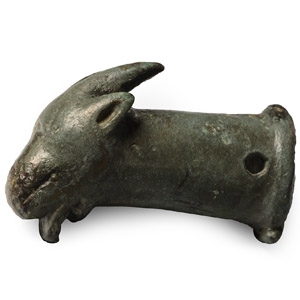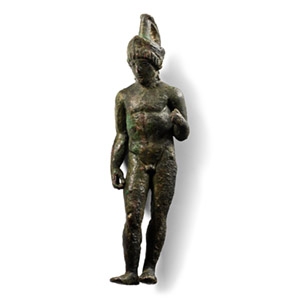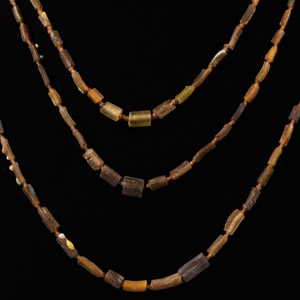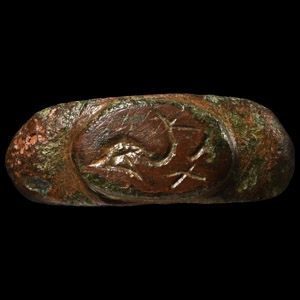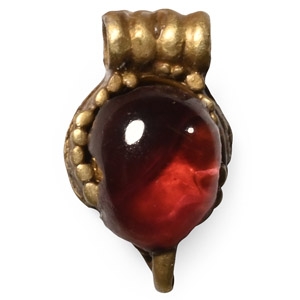Home > Auctions > 3 - 8 September 2024
Ancient Art, Antiquities, Natural History & Coins
Auction Highlights:
with Sotheby’s London, 9 December 1994, no.221.
Accompanied by an academic report by Dr Raffaele D’Amato.
Accompanied by copies of relevant Sotheby's catalogue pages.
This lot has been checked against the Interpol Database of stolen works of art and is accompanied by search certificate number no.11797-206532.
Cf. Richter, G.M.A., Animals in Greek Sculpture, Oxford, 1930, pp.3ff; Toynbee, J.M.C., Tierwelt der Antike, Mainz-Rhine, 1983, pp.54ff.; Padgett, J.M. (ed.), Roman Sculpture in the Art Museum Princeton University, Princeton, 2001, p.257, no.97; Liverani, P., Spinola, G., Vaticano, La Sala degli animali nel Museo Pio-Clementino, City of Vatican, 2003.
The lion was famously featured in many ancient myths, perhaps the most famous being that of Hercules (Herakles) slaying the Nemean lion for his first labour, but it was also linked with the cult of the goddess Cybele, where it is usually represented sculptured in relief on either side of her throne.
Acquired before 2000.
From an English private collection.
Ex London, UK, collection, 1980-1990s.
Cf. Filarska, B., Szkla Starozytne (Ancient Glass) vol. II, Warsaw, 1972, II, cat.220, pl.XLIV,3, for similar vessel.
From a collection acquired on the UK art market from various auction houses and collections mostly before 2000.
From an important Cambridgeshire estate; thence by descent.
Cf. Durham, E., Metal Figurines in Roman Britain, vol. 2, Reading, 2010, pl.275, for type.
Ex German art market, 2000s.
Acquired from an EU collector living in London.
From the collection of Surrey, UK, gentleman.
Ex collection of Dr Djafari (1900-1981), Kaiserslautern, Germany.
Accompanied by an academic report by Dr Raffaele D'Amato.
This lot has been checked against the Interpol Database of stolen works of art and is accompanied by search certificate number no.11812-206498.
Cf. Reinach, S., Repertoire de la statuarie Grecque et Romaine, Paris, 1930, pp.180 and 183, nos.7 (Louvre) and 2 (type B. Kerguerriec. Coll.P. du Chatellier in Kernuz), for similar.
This statue of Mars Gradivus, the marching god of war, was probably a cult offering. The statuette still presents an archaic Etruscan hairstyle, being part of the Italic statuettes of the god produced as votive offering to the temples or for private lararia. A Gallo-Roman period temple dedicated to the cult of Mars with a similar statuette has recently been found in Brittany.
From a 1990s German collection.
Ex London, UK, gallery.
Cf. Bussière, J., Lindros Wohl, B., Ancient Lamps in the J. Paul Getty Museum, Malibu, 2017, nos.244, 249, for the type and the iconography.
The lamp belongs to the Loeschke type V (Bailey type C), group without handle. The main difference of this group from the Loeschke type IV is the shape of the volutes decorating the nozzle. They are called ‘shoulder-volutes’ because they end the lamp’s shoulder that they prolong. The decorative motif is Sol with radiate nimbus, already visible on these lamps and other Roman artworks in mid 1st century A.D.
Found near Sedgeford, Norfolk, UK, in the 1980s.
Acquired in the late 1990s.
Property of a Norfolk, UK, collector.
Cf. for surviving examples of this type of medallions or phalerae, often with an animal, compare various examples in the Staatliche Museen zu Berlin, inv. nos. 31630 and Fr. 1552 g 6-8; Babelon, E., and Blanchet, J.-A., Catalogue des bronzes antiques de la Bibliothéque Nationale, Paris, 1895, nos.12-13, 55, 65-66, 110, 132, 178, 193, 214, 264, 316-17, 359-60, 369, and 445; nos. 25, 28, 120, 143-44, 253, 301, 400, 434, 491, 622, 712, 715, 827, 844, and 1022.
According to the legend, Theseus, prince of Athens, went to the island of Crete to kill a monster who was the son of queen Pasiphae and a wild bull, although officially he was the son of Minos and Pasiphae. Theseus chased him into the labyrinth, killed him and found his way out with the help of the comb of Ariadne, daughter of King Minos. The myth has its representation in the Archaic, Classical and Hellenistic period, and was widely depicted in the Graeco-Roman world. The present repoussé appliqué was probably used as a furniture or horse harness ornament.
From the collection of the famous author, writer and speaker, Gordon Bailey, Essex, UK; formed since 1968.
See Bailey, G., Detector Finds 6, Witham, 2008, p.11-12.
UK gallery, early 2000s.
Ex German art market, 2000s.
Acquired from an EU collector living in London.
From the collection of Surrey, UK, gentleman.
Cf. Ruseva-Slokoska, L., Roman Jewellery, Sofia, 1991, item 229, for type.
Ex property of a late Japanese collector, 1970-2000s.
649 - 660 of 3369 LOTS

.jpg)

.jpg)
.jpg)
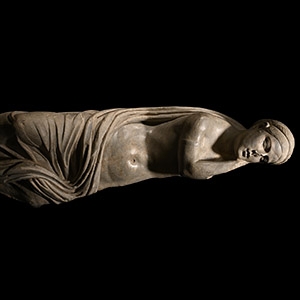
.jpg)
.jpg)


.jpg)
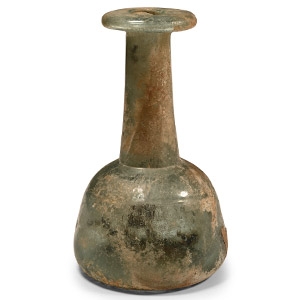
.jpg)
